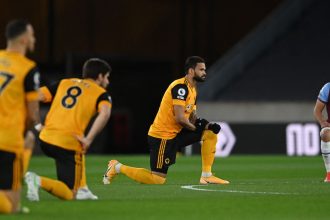da fazobetai: A delightfully unorthodox Sri Lankan attack working at close to its best handcuffed a power-packed West Indies line-up, conceding just 129 runs even though they got just five wickets in the 20 overs
da wazamba: The Report by Sidharth Monga29-Sep-2012
Scorecard and ball-by-ball details
Chris Gayle fell cheaply, sparking wild celebrations•Getty Images
A delightfully unorthodox Sri Lankan attack working at close to its best handcuffed a power-packed West Indies line-up, conceding just 129 runs even though they took only five wickets in the 20 overs. The Sri Lankan top three made light work of the target, the lowest-ever challenge in Pallekele, taking a big step towards the semi-final courtesy of a hefty net run-rate bonus from the win with 28 balls to spare.Between Ajantha Mendis’ different bamboozlements, Nuwan Kulasekara’s mix of inswingers and huge slower balls and Jeevan Mendis’ skiddy legrollers, Lasith Malinga could afford to have an off half-day, even though he too came back with two superb overs in the end to stifle any ambitions West Indies might have had after the innings was rebuilt by half-centurion Marlon Samuels and Dwayne Bravo, who scored 40 off 34 balls.Kulasekara got big man Chris Gayle out with a delivery about 25 kph slower than usual. Ajantha began with a wicket-maiden, toying around with Johnson Charles, and ended with one run and Kieron Pollard’s wicket in the 16th over. Jeevan played his part in slowing down and eventually getting rid of Bravo, who looked threatening. Jeevan even managed to slip in a jig to match Gayle’s celebrations.Smart stats
The number of balls remaining after the win (28) is the second-highest in a World Twenty20 match (target of 130 or more) after Australia’s win over India in the 2012 World Twenty20 Super Eights match.
The win is only the third for Sri Lanka by a margin of nine or more wickets. It is their first such win in the World Twenty20. The defeat is also the third for West Indies by a margin of nine or more wickets.
Sri Lanka have won all four of their matches against West Indies. The lowest margin of victory in the four matches was the 15-run win at Trent Bridge in the World Twenty20 2009.
The 108-run stand between Mahela Jayawardene and Kumar Sangakkara is the third-highest partnership for Sri Lanka in Twenty20 internationals. The top three stands for Sri Lanka have come in matches against West Indies.
The number of fours hit by Jayawardene (125) is joint-second on the list of most boundaries hit by a player in Twenty20 internationals. He is however the highest boundary-hitter (fours) in World Twenty20 matches.
Mendis’ economy rate of 3.00 is the third-best against West Indies in a World Twenty20 match (completed spells only). He also holds the record for conceding the fewest runs (nine) against West Indies in the game at The Oval in 2009.
Sri Lanka were on for this game from the moment Tillakaratne Dilshan dived at short point to keep the first ball of the match to a dot; their fielding hardly ever let up throughout the rest of the innings, except for a half-chance missed by Kumar Sangakkara. There was tension and anticipation around with the way West Indies had played out four quiet overs without the loss of a wicket. Usually one of two things happen at such times: either Gayle takes off or his team slips up after his wicket.Mahela Jayawardene wanted the wickets. He brought on Ajantha in earnest and Charles had no clue which way it was turning, finally jumping out of the crease more in hope than anything. He was beaten by the googly, and stumped easily. Ajantha conceded only leg-byes in that over: take out his middle match and his figures in the tournament now read 5-3-8-7. In the next over Kulasekara produced the massive slower ball, Gayle waited and waited, but all he could manage was an edge, which Sangakkara accepted with a forward dive. With Gayle’s first failure of the tournament, the celebrations suggested the match had been won.Bravo and Marlon Samuels, though, were not to oblige that. Samuels, with his deft touches, and Bravo, with his power, rebuilt the innings with a partnership of 65 in 9.2 overs. The strike-rate may not have been great, but the approach made for good viewing. Bravo’s extra-cover drives matched Samuels’ late-cuts for aesthetics. They preferred the pace that Angelo Mathews and Malinga provided, but Jeevan put the brakes on, conceding just two in his first over, and getting Bravo to pull to long-on in the second.Ajantha came back to finish off Pollard, but Andre Russell, the new man in, broke the maiden. He and Samuels took 21 off Kulasekara’s comeback over, but Malinga pulled them back with a mix of yorkers and slower balls in the 19th. An underwhelming 10 runs came in the last two overs and Sri Lanka took all the momentum into the chase.Dilshan got the chase off to a start similar to the one he had provided in the field. The first three balls he faced he smacked for fours. Fidel Edwards was the culprit providing him width. Replacing Samuel Badree who went for 20 in his quota in the last match, Edwards had gone for 12 off the first three balls. Ravi Rampaul followed it up with a superb over, removing Dilshan, but Jayawardene and Sangakkara were too good against an attack comprising three specialist bowlers and defending just 129.The two showed respect to Sunil Narine, if only because they could afford to, taking just 23 off his four overs, but others weren’t accorded such nicety. Sangakkara reached 1000 international runs along the way, and Jayawardene a seventh fifty. Once Narine was done, they launched an attack in a bid to increase the net run-rate. They did so without playing funky Twenty20 shots. The last 43 runs came off just 20 balls, and ticket to Colombo was all but booked.







